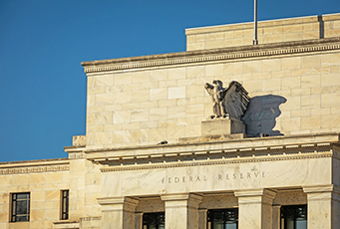After a tumultuous start to the year where the S&P 500 fell by more than 23% from its all-time high, the index rebounded quite strongly over the summer, posting a 17% gain from its low. In addition, economic data was also coming in better than expected, giving hope that the worst of the economic slowdown might already be in the rearview mirror.
However, statements by Fed Chairman Jerome Powell on August 26th poured cold water on the stock market rally. Powell has been using strong language to reiterate the Federal Reserve's position that tackling inflation remains the central bank's number one priority, and they intend to maintain this policy even if it causes "pain" to the markets or economy. This was reinforced by the recent rate hike in late September of .75%.
The Policy Dilemma
When developing monetary policy, central banks must seek a balance between stimulating economic growth and causing inflation. They seek so-called "Goldilocks" conditions, where the economy grows but not so quickly that it ignites inflation. Policies that expand economic growth and increase inflation are often referred to as "loose" or "dovish" policies. On the other hand, policies that seek to restrict growth or reduce inflation are called "tight" or "hawkish."
In recent years, the Fed has generally implemented dovish policies that have helped stimulate the economy and powered the stock market to all-time highs. However, recently, particularly after the global economic shutdowns in 2020, many have criticized central banks for implementing too loose policies for too long.
With inflation soaring, the Fed (and other central banks) faced a dilemma: allow the economic and stock market growth to continue with the potential for sustained high levels of inflation or increase interest rates to combat inflation and risk causing a recession. The Fed opted for the latter and embarked on its most aggressive interest rate raising campaign in a generation.
Bad News is Good News?
Because of how loose monetary policy had been for much of the past decade, even though the Fed had begun tightening earlier this year, many questioned its commitment to doing whatever it takes to fight inflation. They believed the recent hawkish policies would be reversed if economic data showed signs of weakness to avoid a recession. This became known as the "Fed Put," and it was not without its merits. After incrementally increasing the Federal Funds rate from zero to 2.5% over several years, the Fed abruptly reversed course when the S&P 500 fell by more than 15% in a matter of weeks in late 2018. As a result, it began cutting rates to protect the market.
A Different Path Forward
However, in Powell's August 26th comments, the Fed Chairman was clear that bringing down inflation was the primary goal, even if that had a negative (hopefully short-term) impact on economic output and the markets. Powell's commitment to fighting inflation was much more hawkish than investors had expected, exhibited by the sharp 1,000-point sell-off in the Dow that afternoon and the continued sell-off in the days following.
This newfound commitment to keeping rates higher for longer is in stark contrast to the past's loose-"Fed Put" monetary policy. It has been made possible because of the strong labor market, which provides more flexibility for the Fed to act before it detrimentally affects the economy. The probability for an additional 75 bps rate increase at the September meeting has increased from 25% to over 75%. Markets are also expecting an additional 50 bps increase in November and a 25 bps increase in December. The previous belief that the Fed would begin to cut rates in early 2023 has all but disappeared.
Conclusion
As higher rates begin to cool inflation and bring it down towards the Fed's 2% target, additional increases may prove unnecessary. This could provide a life raft to markets. Amidst all this uncertainty, one thing remains clear: predicting short-term market moves is a fool's errand. Stop us if you've heard this before, but maintaining a diversified investment strategy is the best way to reach your long-term investment goals.
Schedule a Consultation
We have helped our clients answer these questions and more. If you want a clear understanding of your financial future, and need help making changes to reach your goals, schedule a consultation and we can get started.
Prior to implementing any investment strategy referenced in this article, either directly or indirectly, please discuss with your investment advisor to determine its applicability. Any corresponding discussion with a Bedel Financial Consulting, Inc. associate pertaining to this article does not serve as personalized investment advice and should not be considered as such.
Recommended Articles
Private Equity and M&A in a Low-Rate World
Deal flow is the stream of business proposals, investment...





